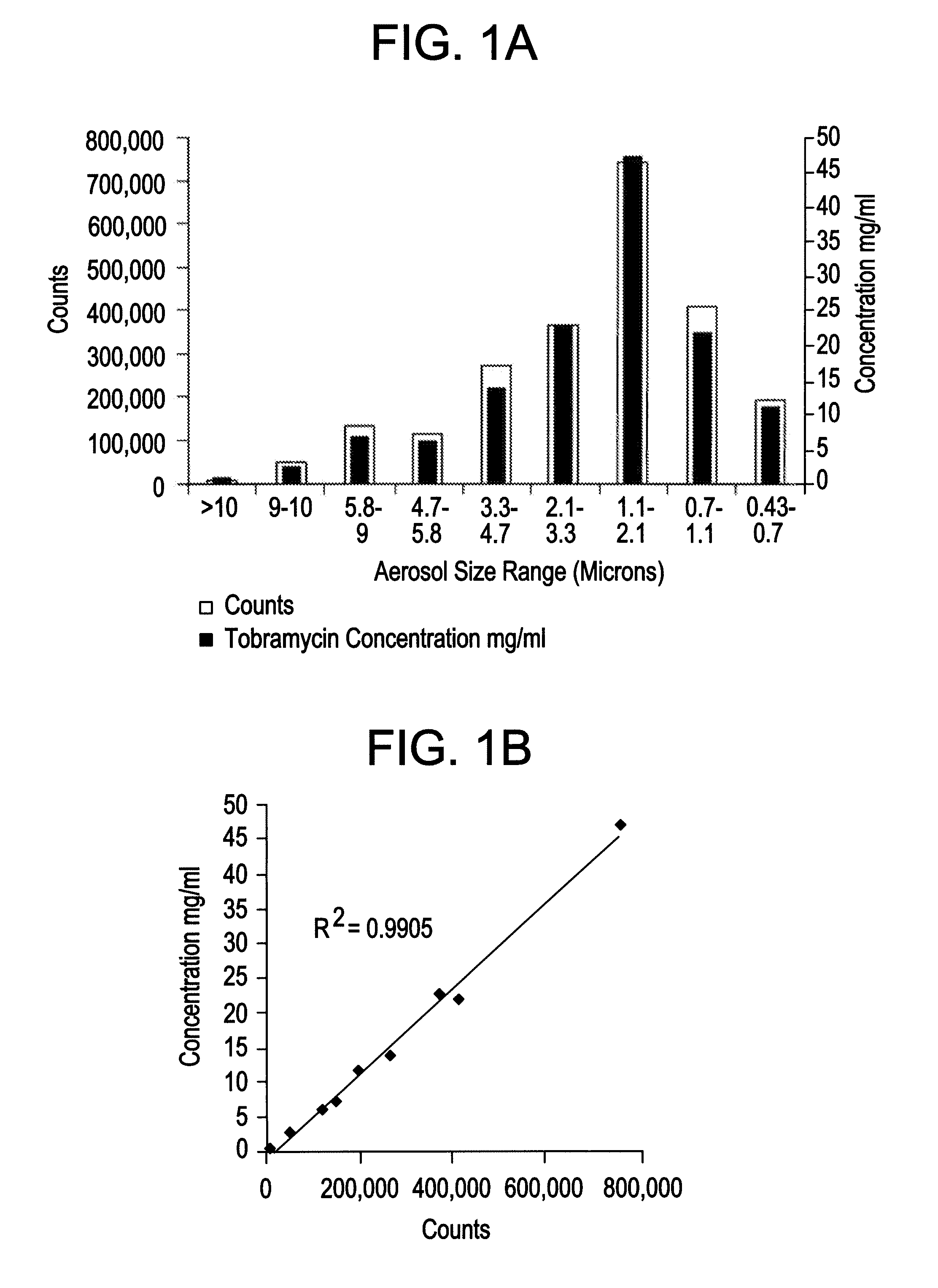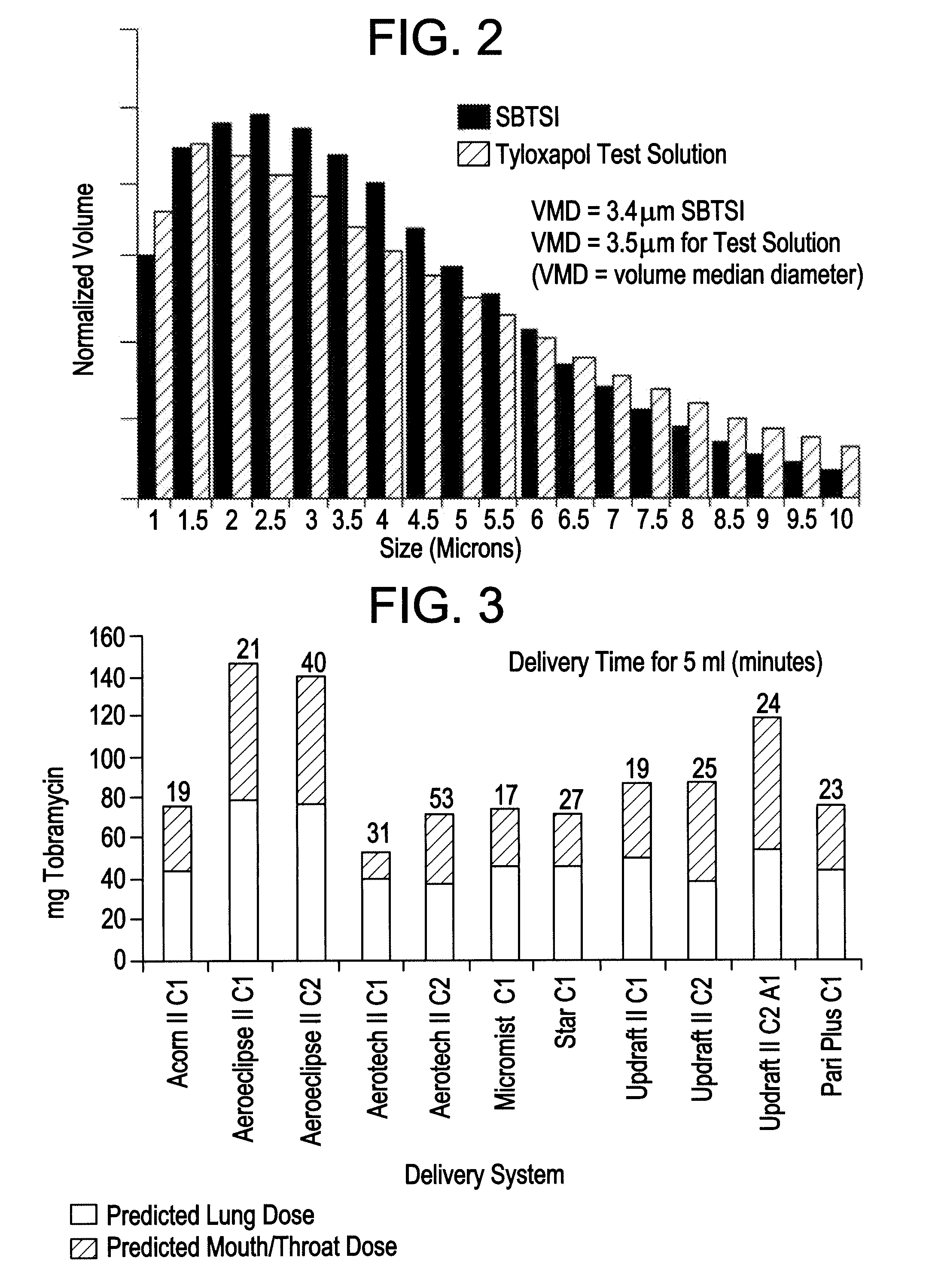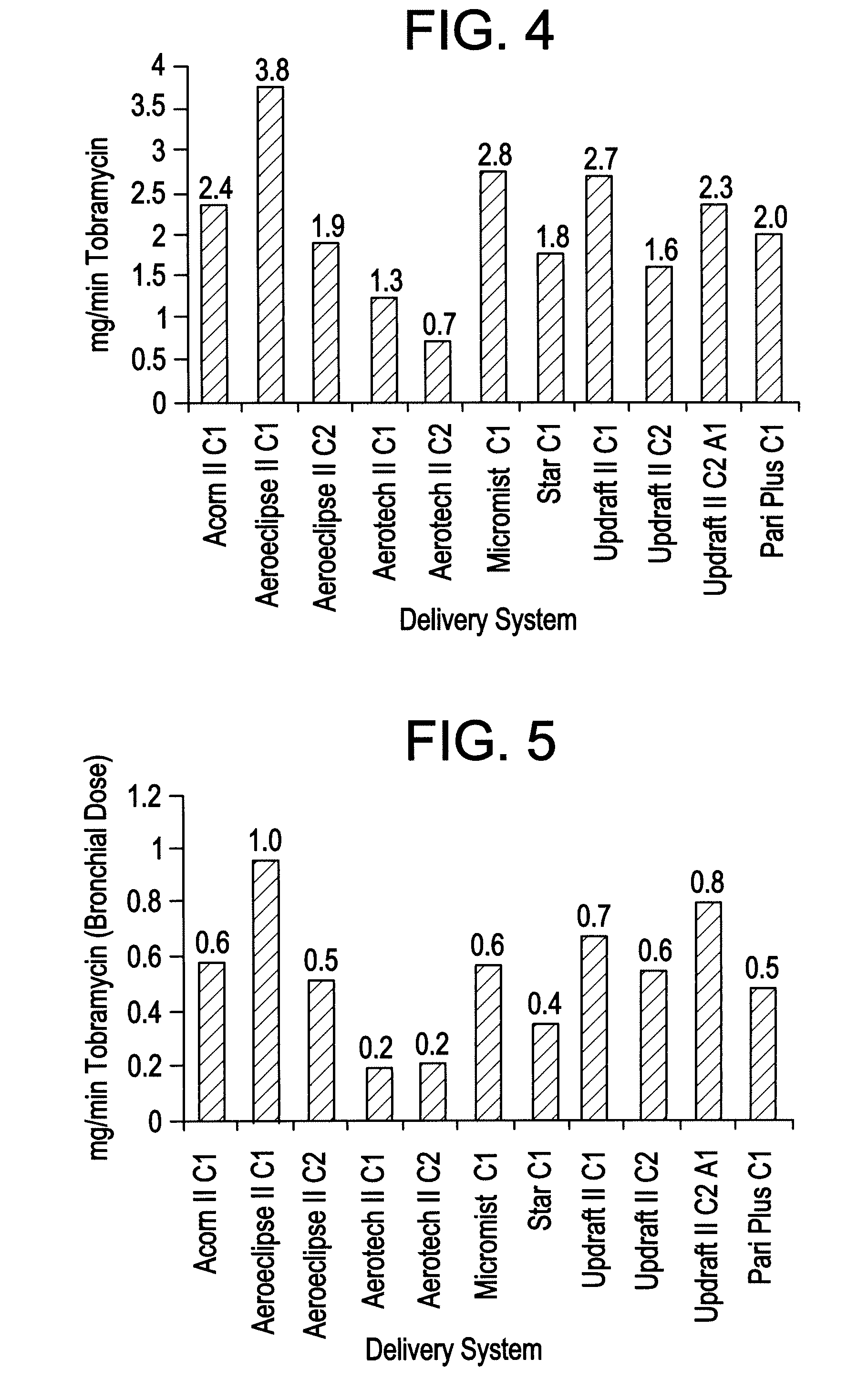Surfactant-based antimicrobial solution for inhalation
a technology of antimicrobial solution and surfactant, which is applied in the direction of drug composition, dispersed delivery, aerosol delivery, etc., can solve the problems of unreliable latter, insufficient elimination of infection, and only poorly realized therapies
- Summary
- Abstract
- Description
- Claims
- Application Information
AI Technical Summary
Benefits of technology
Problems solved by technology
Method used
Image
Examples
example 1
Surfactant-Based Composition and Delivery Device
[0038]The inventors produced a surfactant-based tobramycin solution for inhalation (“SBTSI”). Each 10 ml of SBTSI comprised 0.5 ml of 20 mg / ml tyloxapol solution, 600 mg of tobramycin, and 43 mg of NaCl, with added water to reach 10 ml. The solution did not include phospholipids.
[0039]In testing a delivery system for SBTSI, the inventors considered eleven aerosol delivery systems, each including a nebulizer and a compression source (see Table 1). The inventors employed a solution containing only the tyloxapol component of SBTSI, essentially to save the cost of repeated uses of the antibiotic, tobramycin. For testing purposes, this expediency was acceptable in principle because the surfactant component was the dominant factor affecting aerosolization.
TABLE 1Nebulizer delivery systems included in studyto determine optimal system for SBTSI.SystemNebulizerManufacturerCompressorManufacturer1Acorn IIVital Signs Inc.8650DDeVilbiss2AeroEclipse...
example 2
In Vitro Methodology for Determining Dispersion Characteristics of Formulation of the Invention
[0049]A micropump nebulizer such as the Aerogen Pro, a product of Nektar / Aerogen (Sunnyvale, Calif.) is employed to produce a 4- to 5-micron median diameter aerosol, and tubing of decreasing diameter is used to deliver this aerosol through a 2 mm cannula tip. The aerosol is driven through the tubing system by means of a small air compressor, such as the Pulmoaide, a product of Sunrise Medical (Somerset, Pa.). The air is humidified and heated to 37° C. via a humidification system such as the MR850, a product of Fisher & Paykel Healthcare (Laguna Hills, Calif.). A flow meter placed upstream of the nebulizer is used to monitor and control air flow rate. The cannula tip is placed through a hole drilled in a cell culture plate lid that fixed its position 1 mm above the delivery surface.
[0050]Three primary delivery surfaces are used: (1) porcine gastric mucus (PGM), (2) human bronchial epithelia...
PUM
| Property | Measurement | Unit |
|---|---|---|
| surface tension | aaaaa | aaaaa |
| pressure | aaaaa | aaaaa |
| pressure | aaaaa | aaaaa |
Abstract
Description
Claims
Application Information
 Login to View More
Login to View More - R&D
- Intellectual Property
- Life Sciences
- Materials
- Tech Scout
- Unparalleled Data Quality
- Higher Quality Content
- 60% Fewer Hallucinations
Browse by: Latest US Patents, China's latest patents, Technical Efficacy Thesaurus, Application Domain, Technology Topic, Popular Technical Reports.
© 2025 PatSnap. All rights reserved.Legal|Privacy policy|Modern Slavery Act Transparency Statement|Sitemap|About US| Contact US: help@patsnap.com



